Strategic content marketing has a proven track record of helping businesses grow brand awareness. But there are plenty of other benefits too, from building relationships to boosting your bottom line.
In this article, we’ll explore 10 benefits of effective content marketing and show you why it’s worth your time and investment.
1. Increases Conversions
Great content gives people the information they need to make the next step toward buying. It provides clarity and reassures your target audience toward conversion—whether that means subscribing to a newsletter, requesting a demo, or even making a purchase.
Imagine a shopper looking for a new laptop. They’re almost ready to buy but have a few final questions they need answered before they’re ready to make a decision.
They’ve narrowed down to two competing retailers that offer similar devices at about the same price.
- Retailer No. 1’s website has product pages with basic spec info about the laptop.
- Retailer No. 2 also offers plenty of original content in addition to the basics. Its product page links to resources on basic setup and troubleshooting and info on how to contact customer support. It also includes reviews from other customers.
Because they have this informational content about the device, Retailer No. 2 is able to answer the shopper’s questions. This potential customer has the information they need to make a purchasing decision.
Look at Ebuyer’s blog, for example. The retailer provides information about the products it sells to educate users about everything from emerging tech to how-tos to choosing a device.
This blog on AlphaSync PCs discusses features and perks that gamers care about:
The post ends with an invitation to browse Ebuyer’s exclusive inventory of AlphaSync gaming PCs. It reassures readers and encourages them to take the next step: visiting Ebuyer’s online store.
2. Strengthens Customer Relationships
Content marketing is all about consistently attracting and engaging with customers. That matters because customers are more likely to trust and buy from brands they feel connected to.
For instance, brand storytelling is a good way to connect with your audience.
By using your story to speak to your audience’s values and beliefs, you engage them on an emotional level.
According to Harvard Business School Professor Gerald Zaltman’s research, 95% of buyers’ decision-making takes place in the subconscious mind. So the emotional connections you create with story-driven content can drive sales.
But a good story isn’t one article or video. It’s something you tell through many types of content marketing.
Whatever the medium—blog posts, social media content, case studies, infographics, etc.—your content should do the following
Show Empathy
Your content needs to speak to your target audience in a way that helps them see themselves in your story. Otherwise, your message won’t feel relevant.
Google used relatable characters in its recent Pixel marketing campaign. In the ads, you’ll see a range of people doing typical, everyday activities—except there’s a Google product improving their lives:
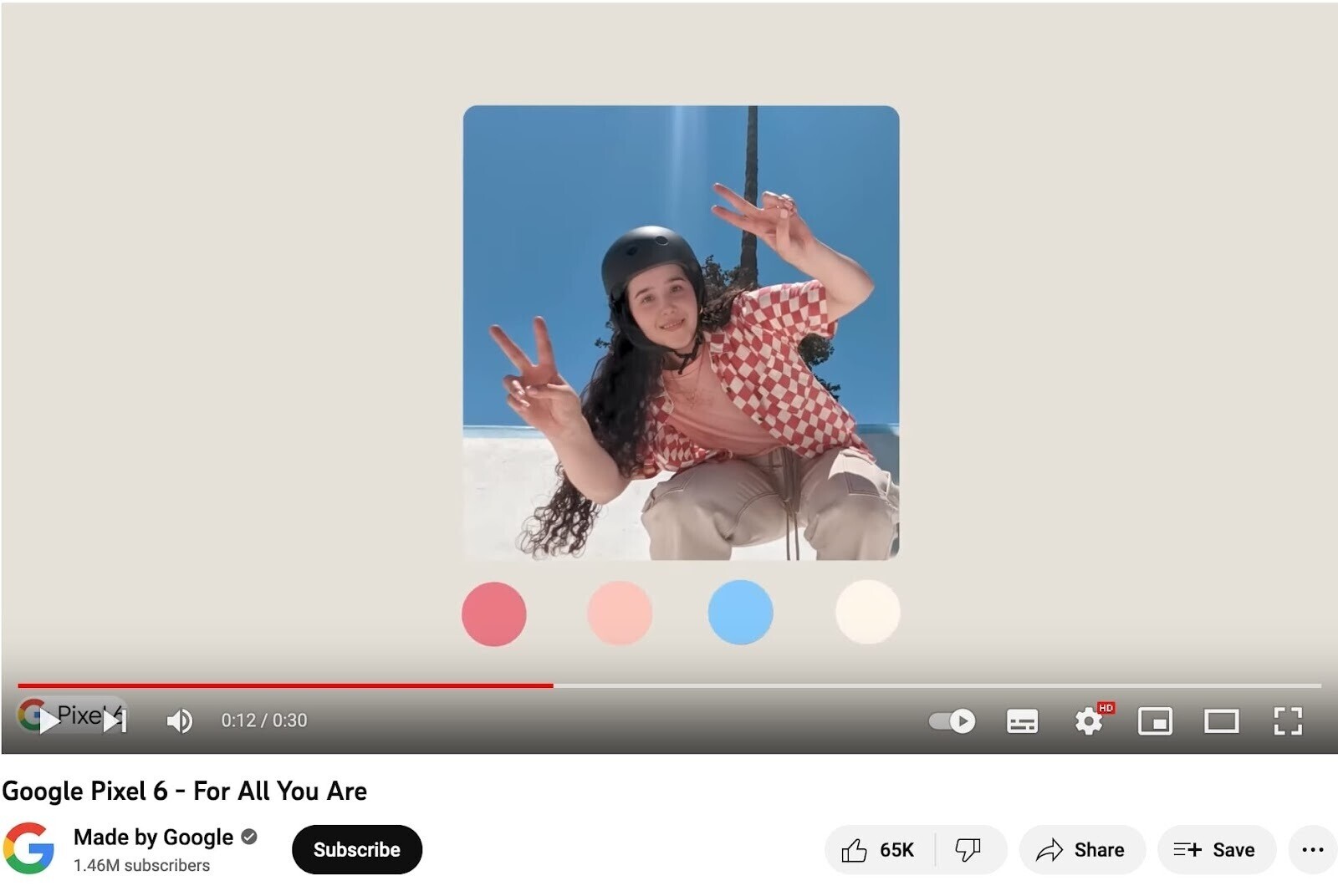
Provide an Interesting Angle
Share a unique aspect of your company or your approach to create more reasons for customers to feel a connection with your brand. What is it about your story that makes you different from your competitors? Identify that differentiator and show it in your content.
Whole Foods stands out in an incredibly busy market by emphasizing its sustainability:

Image Source: Whole Foods
Their story will help consumers who care about sustainability relate to the brand.
Be Authentic
Consumers want honesty. Few expect perfection.
U.K. bank Monzo does a good job of showing authenticity.
The online app-based bank is transparent about its growth process. It shares details of things such as new accounts offerings, leadership changes, and profitability via blog posts, email newsletters, and the Making Monzo Twitter account:
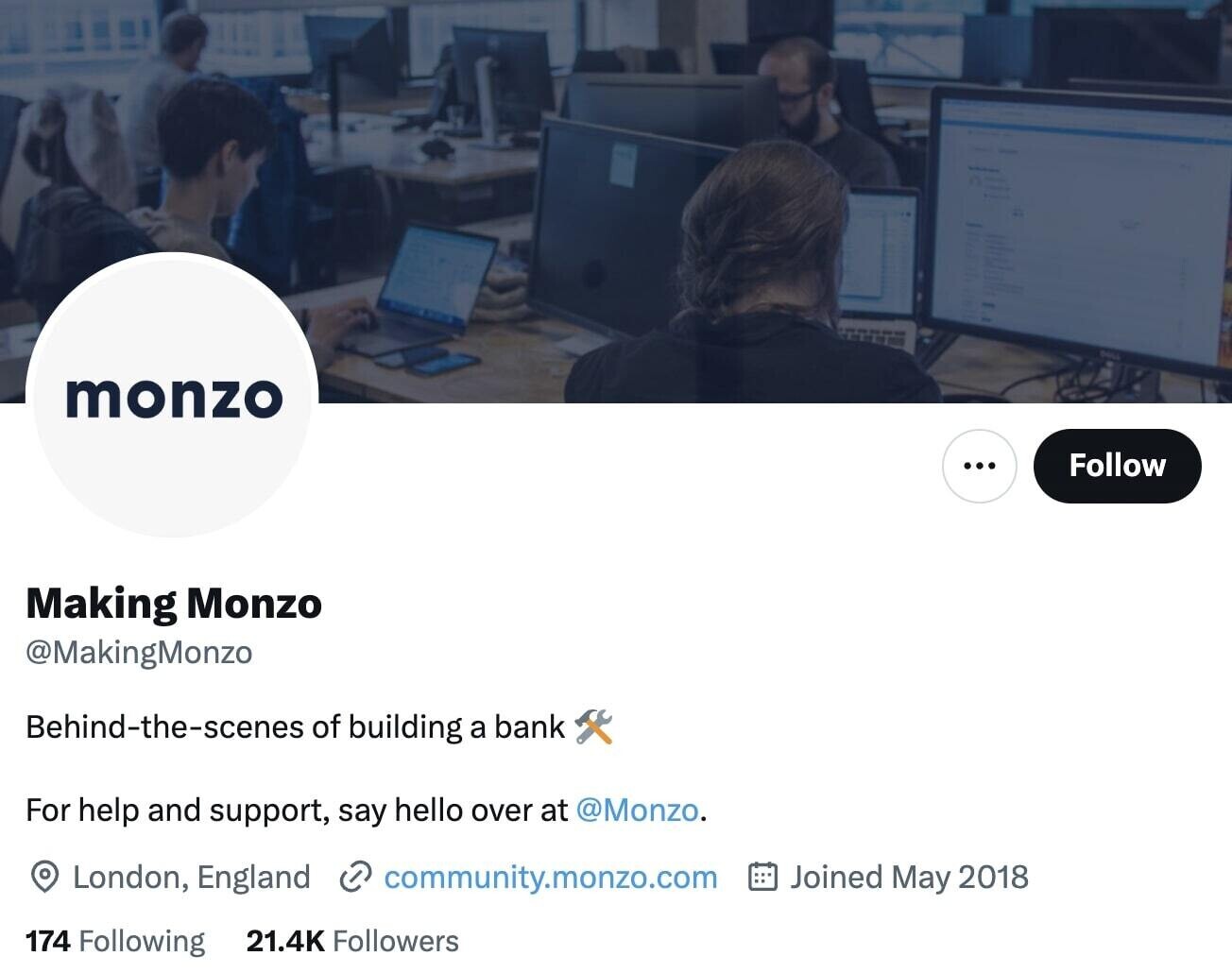
Remain Consistent
Your audience can only get to know your brand (and become emotionally invested) if your content’s messaging and tone are consistent.
Consistency shows reliability. When consumers hear the same message and tone across your brand, it helps them trust that they’ll have an equally positive experience with every interaction.
For instance, Ben & Jerry’s has a consistent message and a distinctive voice.
The ice cream maker focuses a lot of its content marketing efforts on its commitments to social and environmental responsibility. And it delivers these messages in the same positive, enthusiastic tone used in ads for new ice cream flavors:

Image Source: Ben & Jerry’s
Inspire Action
Great content should give people the information they need to confidently take the next step in the buyer journey.
People are eager to be part of a great brand story. They can do that by clicking “follow,” signing up for a newsletter, or buying a product.
Invite people to get involved with direct calls to action, like smol does on its homepage:
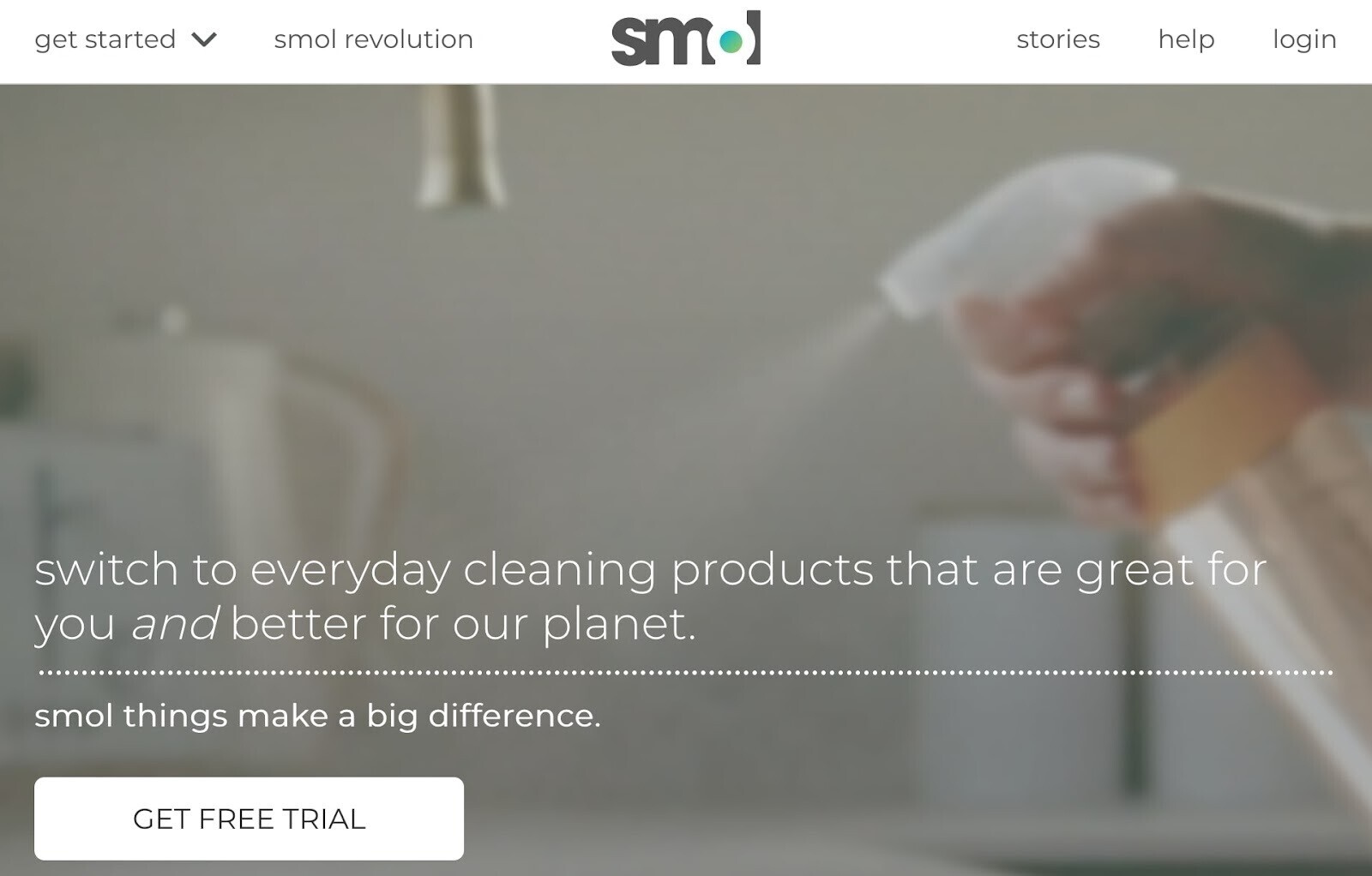
Image Source: Smol
3. Grows Brand Awareness
For newer companies, one of the biggest benefits of content marketing is that it ensures potential new customers see your business.
It increases your visibility in a couple of ways. Let’s explore.
Leads to higher rankings in search results
The higher you are in search engine result pages (SERPs)—the pages that display when a query is entered into the search bar—the better people can find you. And once they do, they’re more likely to click through to your website.
Our State of Content Marketing 2022 Global Report revealed that search was by far the most popular traffic source for blogs in various industries.
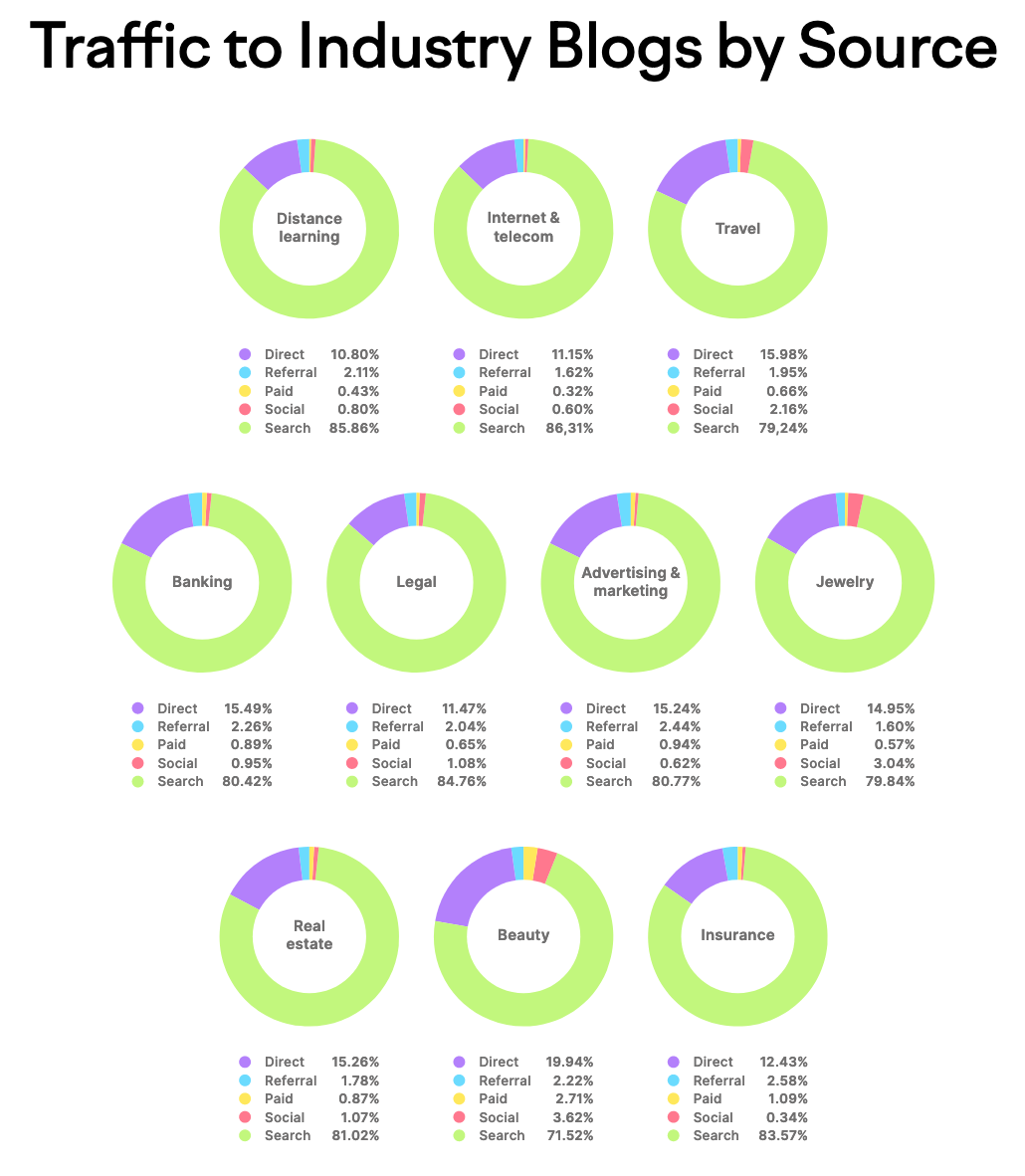
We’ll talk more about SEO and traffic from SERPs shortly.
Inspires people to talk about your brand
Create content valuable or interesting enough, and people will want to talk about it.
Word of mouth is powerful. In a 2021 Nielsen survey of consumers, 88% said they trust recommendations and referrals from people they know more than any other channel.
Positive mentions of your brand in conversations, messaging apps, and social media feeds all help you reach more people for free.
For example, Canadian food brand SunRype encouraged followers to share images of themselves holding its products as part of a social media competition:
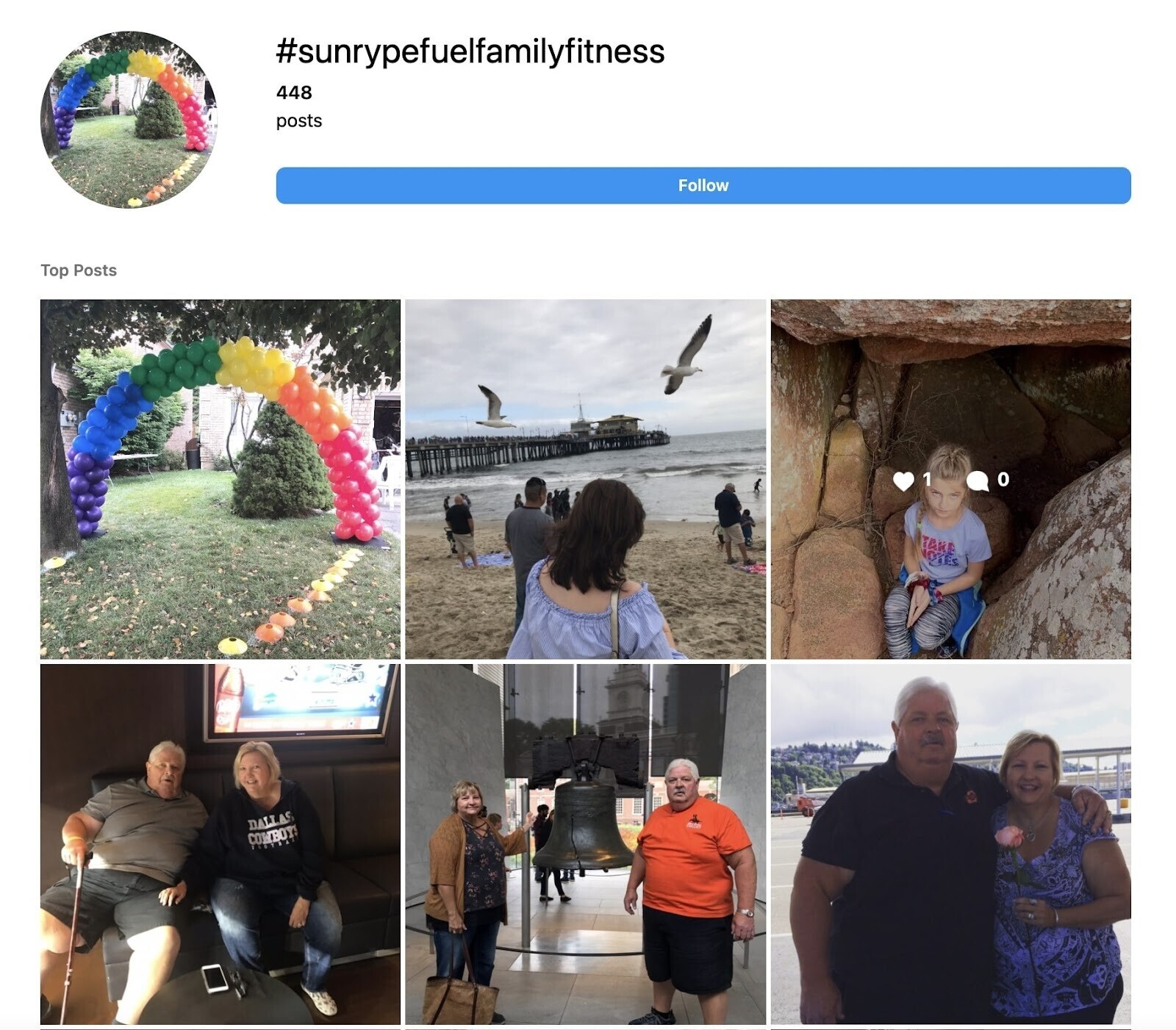
Despite the company only having 73,000 followers on Facebook and even fewer on Instagram, it received close to 100,000 competition entries and the contest generated 196,077 views.
In other words, SunRype significantly expanded its audience with some really simple, easy-to-execute, cost-effective content marketing.
4. Connects with Ad-Wary Audiences
Content marketing helps you reach buyers who actively avoid ads.
And that group is significant, especially for brands selling to young people.
Nearly all (99%) of Gen Z consumers skip ads when possible, according to Bulbshare. And 63% use ad blockers. These consumers would rather hear real voices.
Don’t get us wrong: paid ads (e.g., pay-per-click ads) are incredibly useful. They help you get in front of specific audiences online, and quickly.
This image shows the huge amount of real estate that ads (highlighted in purple) can get in some Google searches. It’s hard to ignore:
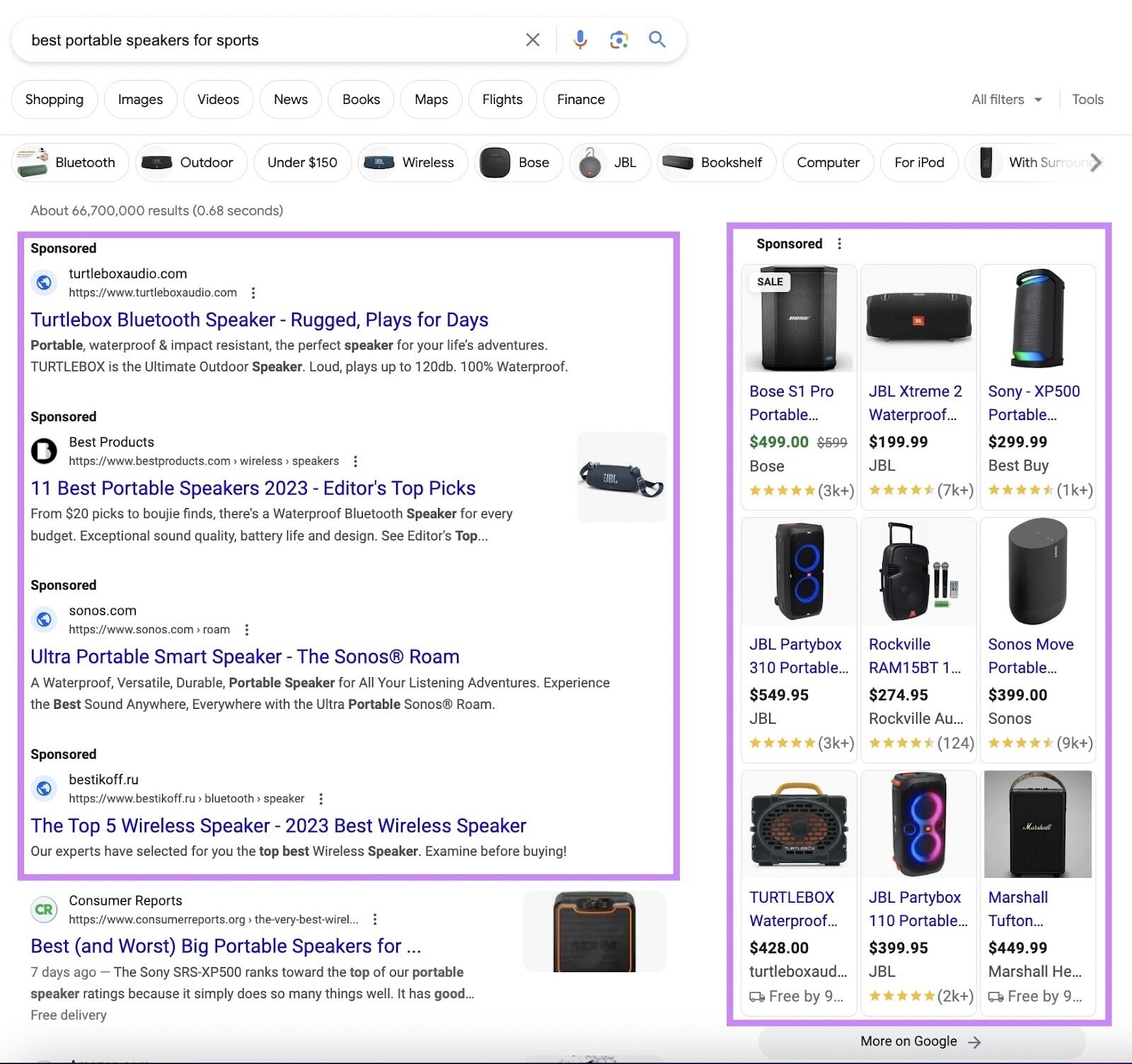
Image Source: Google
As the research above shows, many searchers are wary of ads. They’ll head straight for the organic results (green in our image). That’s why the best returns come from combining both paid and non-paid marketing.
By building up a wealth of useful, search-optimized content, you’ll catch those people who don’t trust ads or refuse to engage with them.
You can even drive traffic to your organic content (e.g., blog posts, whitepapers, and video content) using paid ads. Win-win!
5. Builds Industry Authority
Well-informed product- and industry-related content shows your audience that you know your stuff. That authority instills trust, which in turn inspires purchases.
According to one Edelman study, trust is even more effective than love at driving sales:
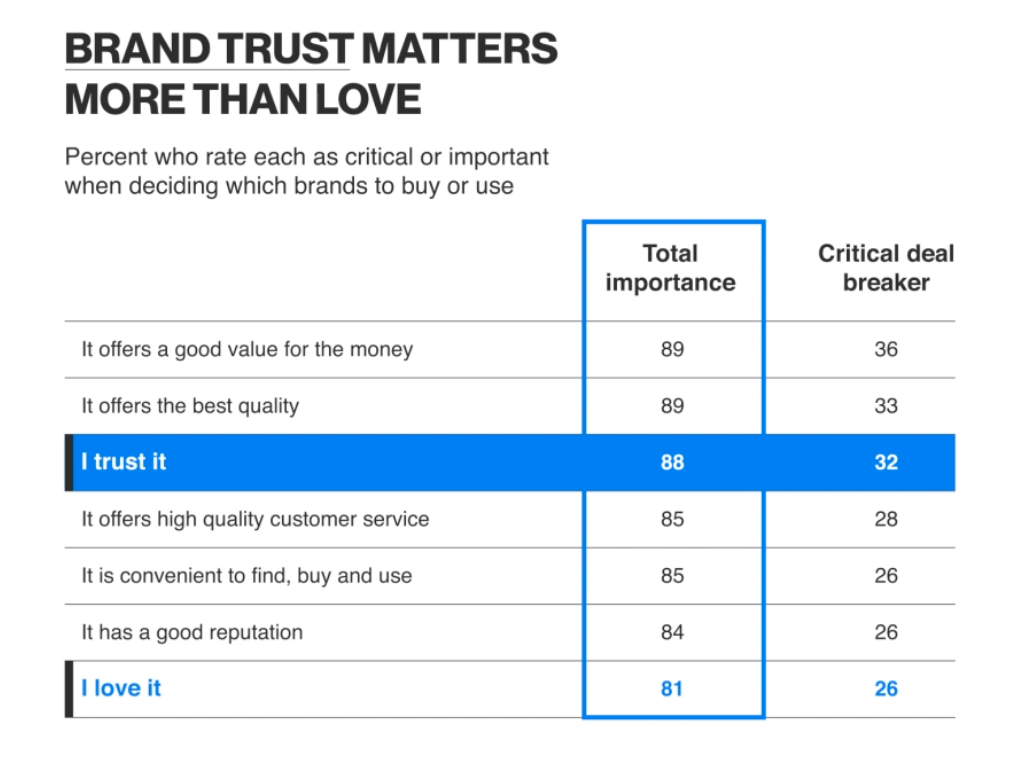
It has lasting effects, too. In the same survey, 61% of consumers said they’ll advocate for a brand they fully trust. In other words, they’ll become free-of-charge marketers for your business.
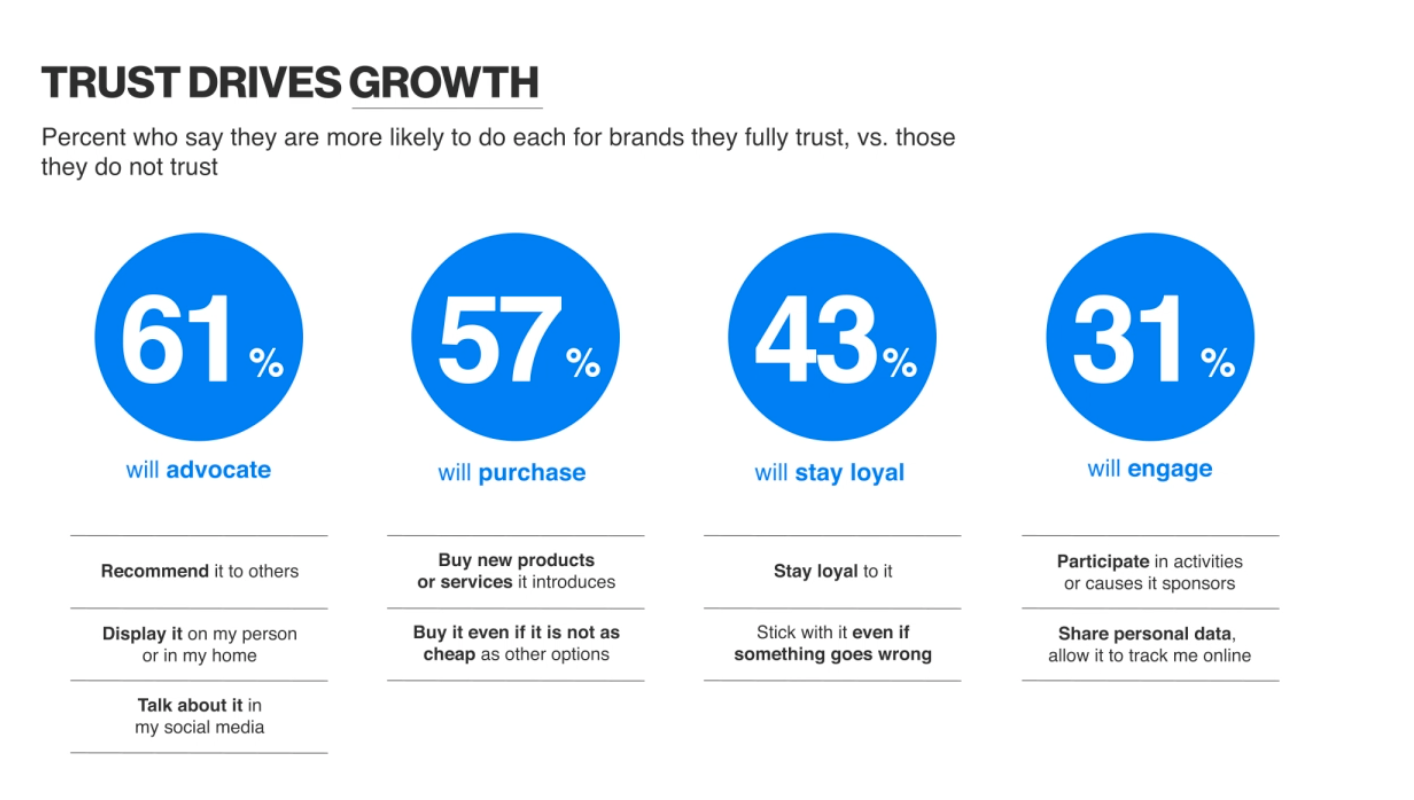
Building trust comes from flexing your expertise, but not in a patronizing way.
Instead, aim to:
Be useful. Use relevant content to solve your ideal customer’s biggest challenges. For example, if the laptop retailer we mentioned earlier knows its customers struggle to balance cost and performance, it might create a guide on cheap performance hacks.
Be a thought leader. Unique takes on industry topics and challenges show you’re a leader, not a follower. As long as you don’t sacrifice accuracy, saying something different will get people to sit up and take note.
6. Increases Website Traffic
Helpful, SEO-driven content brings more potential customers to your website. From there, you can engage them with product pages and supporting information to make sales more likely.
Many businesses realize this already. In our State of Content Marketing 2022 Global Report, we found increasing website traffic to be the second-most popular goal for content marketers.
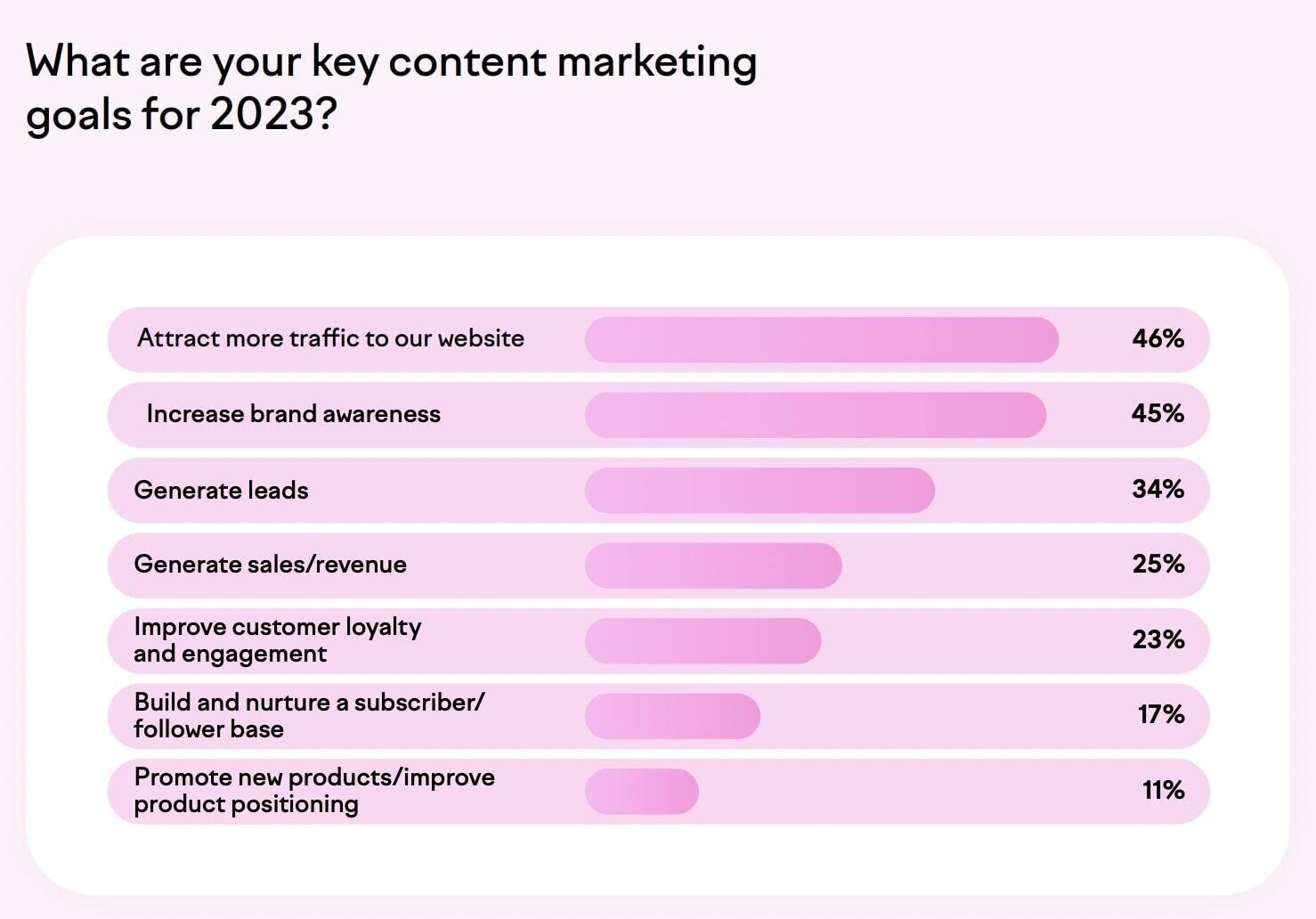
Organic traffic’s benefits work like this:
Google’s priority is providing great user experiences. Its algorithms exist to connect searchers with the information they want most. If you focus your inbound marketing efforts on your target audience’s wants, needs, and pain points, you’re likely to:
- Rank higher in the SERPs
- Draw more clicks from target customers
- Engage people with your website content
Voe Tranquilo’s story is a great example of using content to drive valuable organic search traffic.
The company, which helps people solve air transport issues, increased organic traffic by 588% using high-quality content and reaped huge rewards.
First, it became more visible on search engines by targeting valuable keywords with its content:
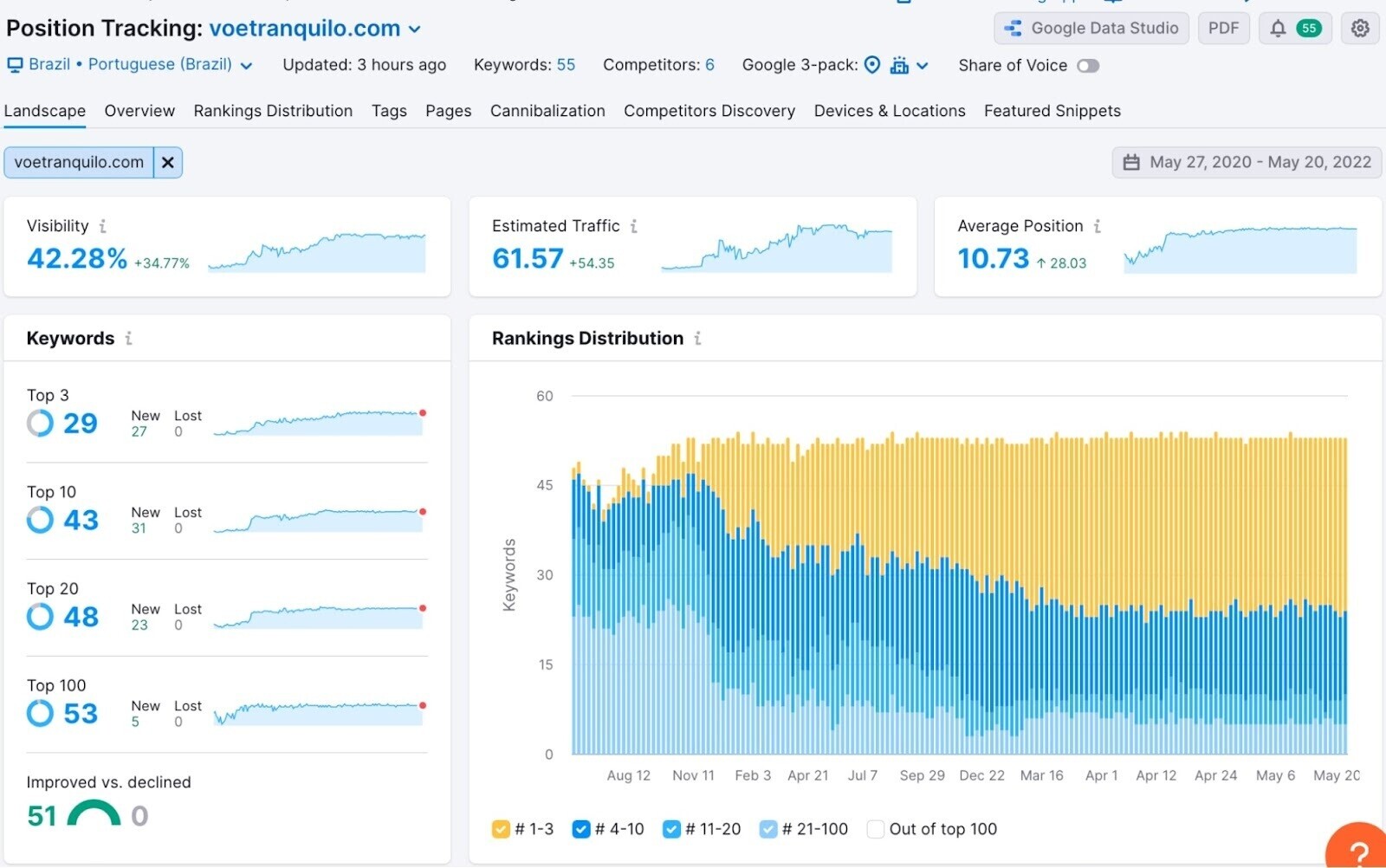
That caused organic traffic to rise from 6,450 users in January 2021 to 44,378 users in January 2022:
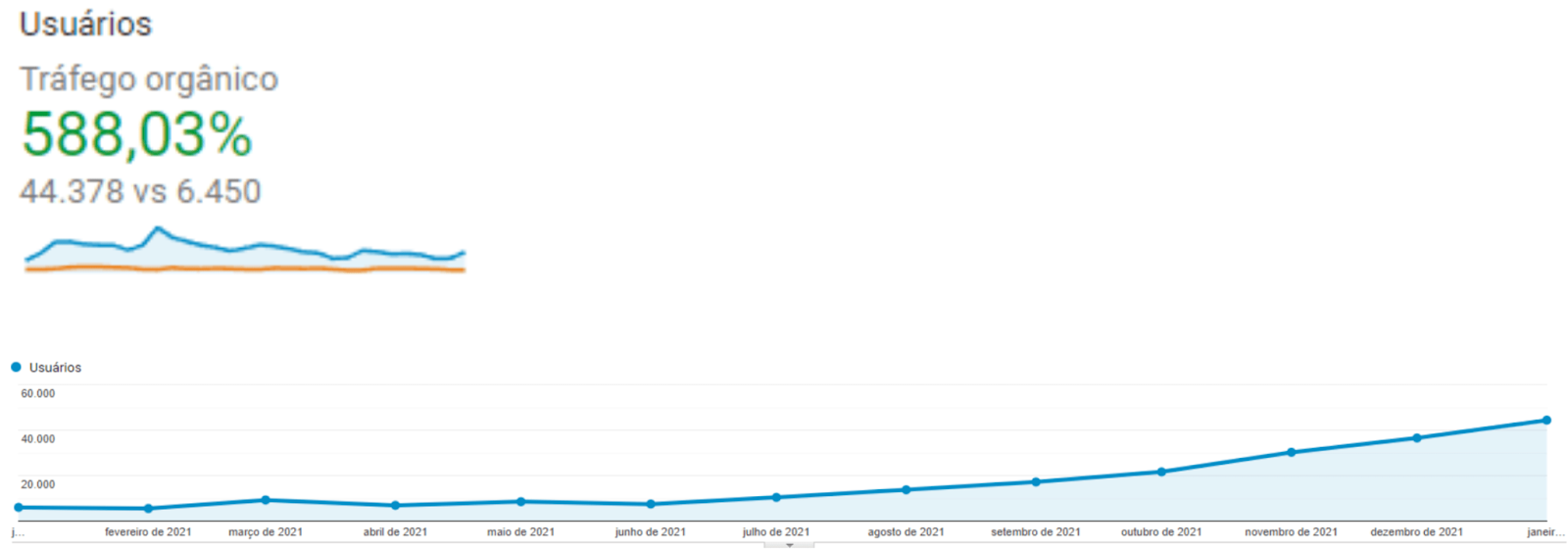
In doing that, it reduced its customer acquisition cost (the average cost of acquiring one new customer) by 66.5%. And after 12 months of good content marketing and SEO, it had increased year-on-year revenue by 47%.
7. Teaches You About Your Audience
Sharing different types of content helps you reach a broader audience. By tracking how and where people engage with your brand, you’ll better understand what makes your ideal customers tick.
For example:
Google Analytics data shows that short blog posts with embedded demo videos are the most effective at driving visitors to your product pages.
This suggests your audience prefers to see rather than read what you have to say.
You might respond by:
- Creating more video-based marketing content
- Adding demonstration videos to your product pages to keep people engaged to conversion
On a broader level, you can use analytics tools to paint a clear picture of your target audience.
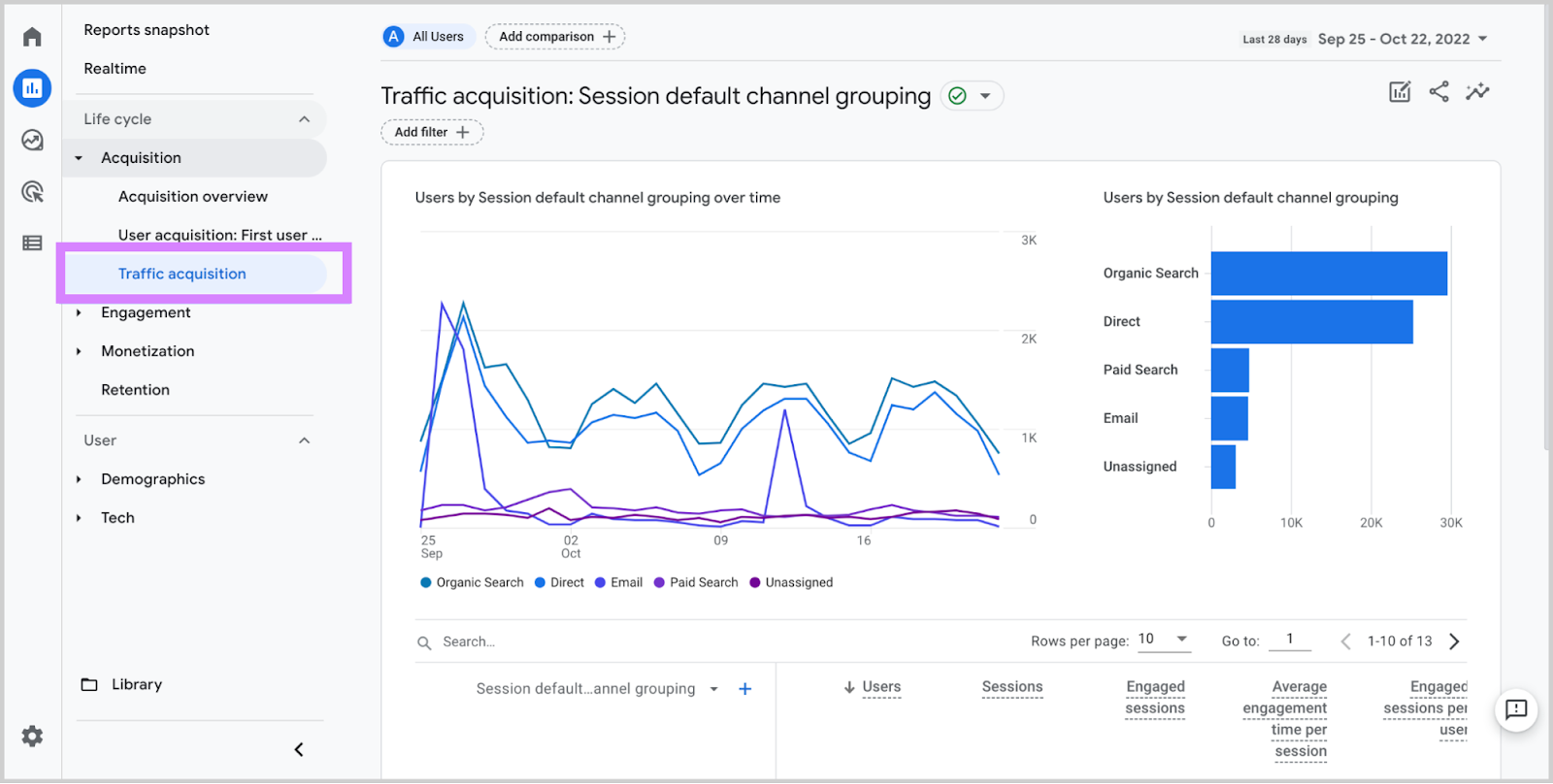
In Google Analytics, for example, you’ll learn:
- How people find your content (i.e., whether they arrive via search engine results, ads, or email content)
- How long they stay on each page
- What devices and browsers they use
- Their demographic profile (age, gender, interests, etc.)
The more content you have on your site, the more accurate and comprehensive this picture will be. And the more accurate the picture is, the easier it’ll be to target the right people with future content marketing campaigns.
8. Eases Pressure on Customer Service Teams
If you can answer website visitors’ high-level questions through your content, customer service staff will have more time to:
- Respond to more complex inquiries
- Deliver more personalized services
Creating a support hub, such as Expedia’s in the image below, is the most direct way to pre-empt product questions from customers.
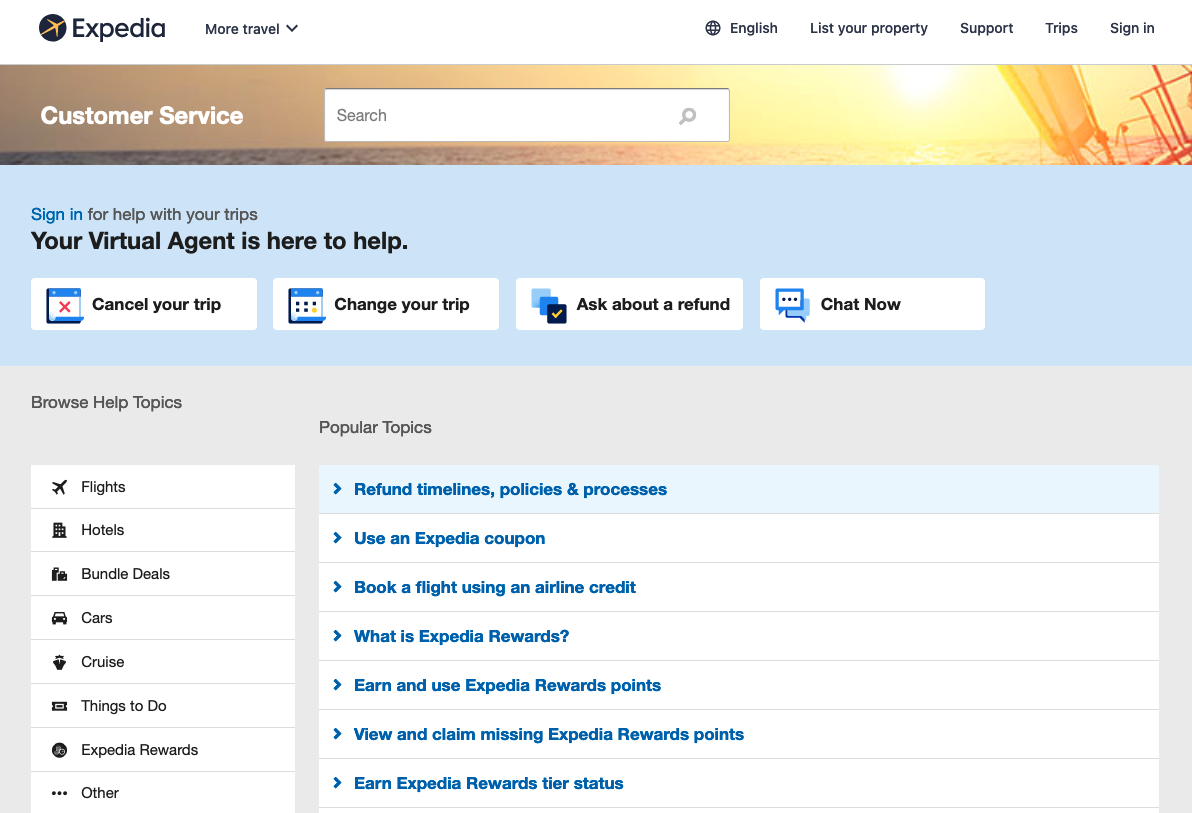
Answer common questions in marketing content such as blog articles, social media posts, and video explainers.
For example, Lowe’s Home Improvement offered some basic but helpful information for its Facebook followers:
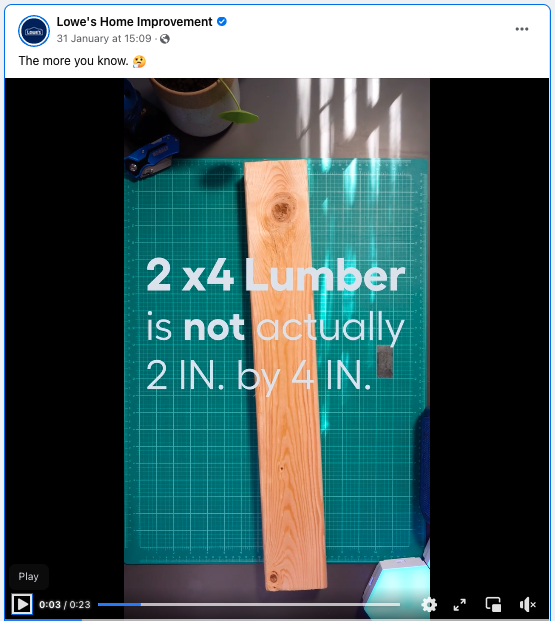
Semrush will help you identify the questions people ask about your products or industry. All you need is a seed keyword related to your website or service. For example, Lowe’s could have searched “lumber” and found people asking about lumber sizes.
To find questions via the Keyword Magic Tool, enter your keyword (e.g., “whole bean coffee” in the image below) into the search bar and select the questions filter.
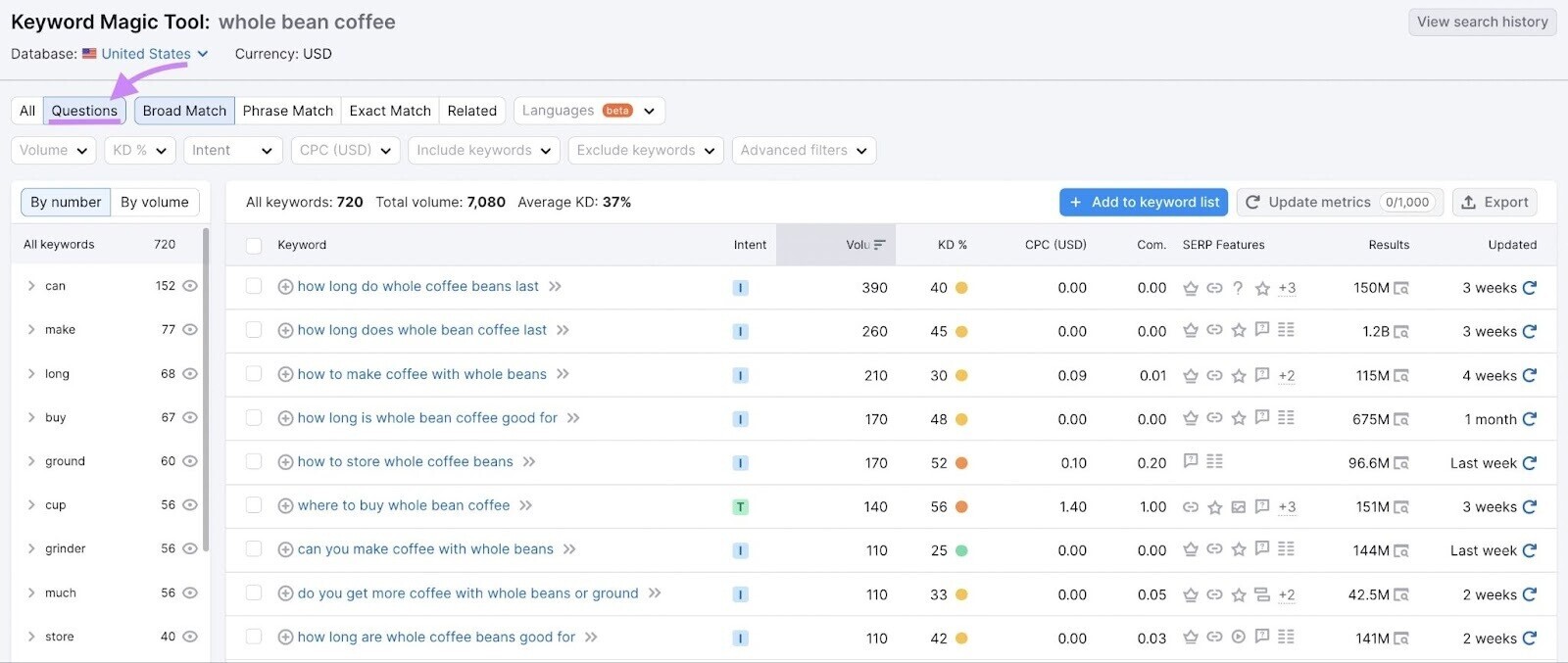
The report will show all related search queries that include “who, what, where, when, why, how, is, can,” and other ways of forming questions.
The other way to find questions is via the Topic Research tool. It’s able to find related queries based on a central topic. If your business serves a local area, enter the location here too.
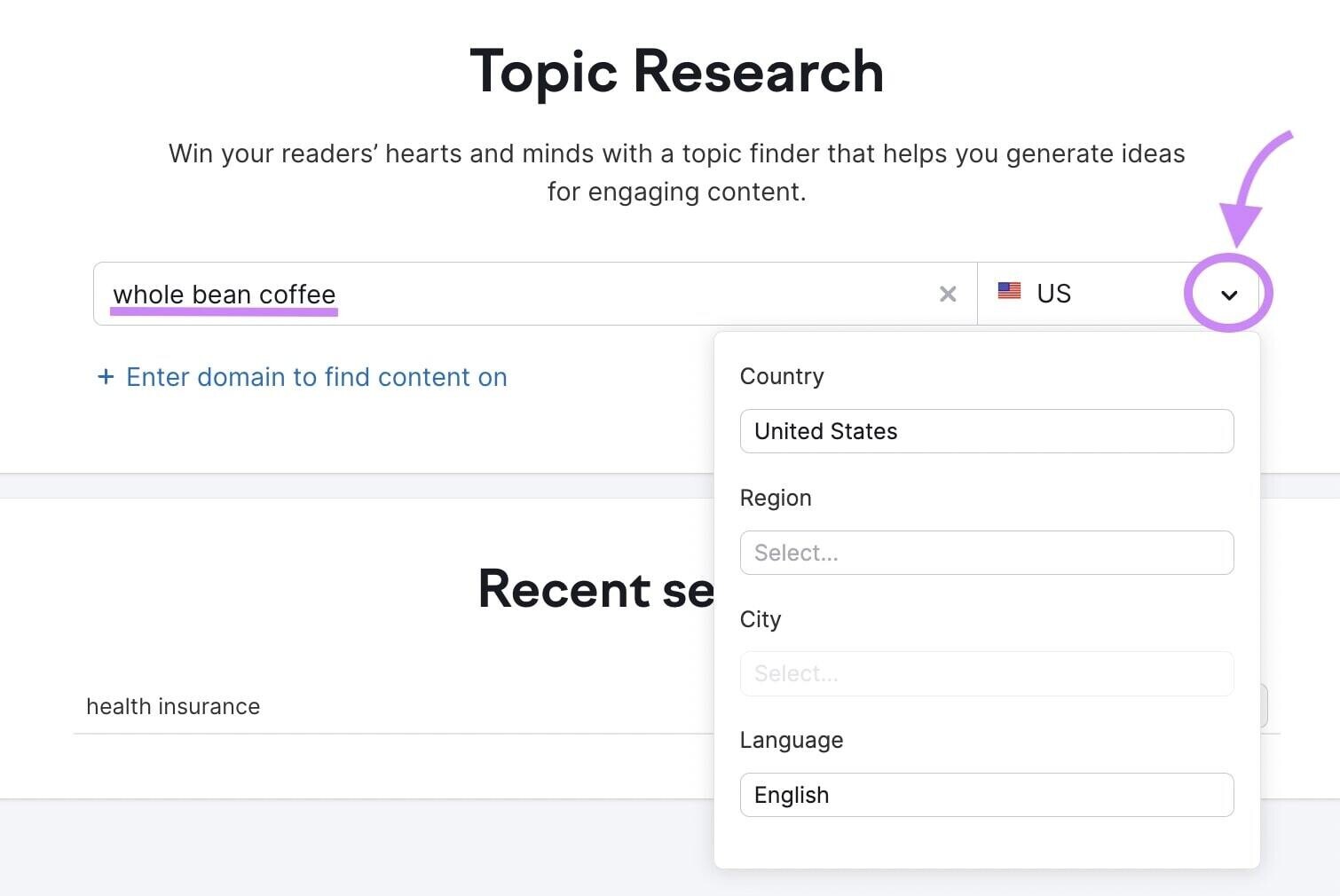
Start the tool by entering your main topic and hitting the green get content ideas link. You’ll see cards showing you related topics and the popular headlines and articles related to your query.
Find questions within each card by selecting the subtopic. The tool will display the list of questions on the right-hand side of an opened card.
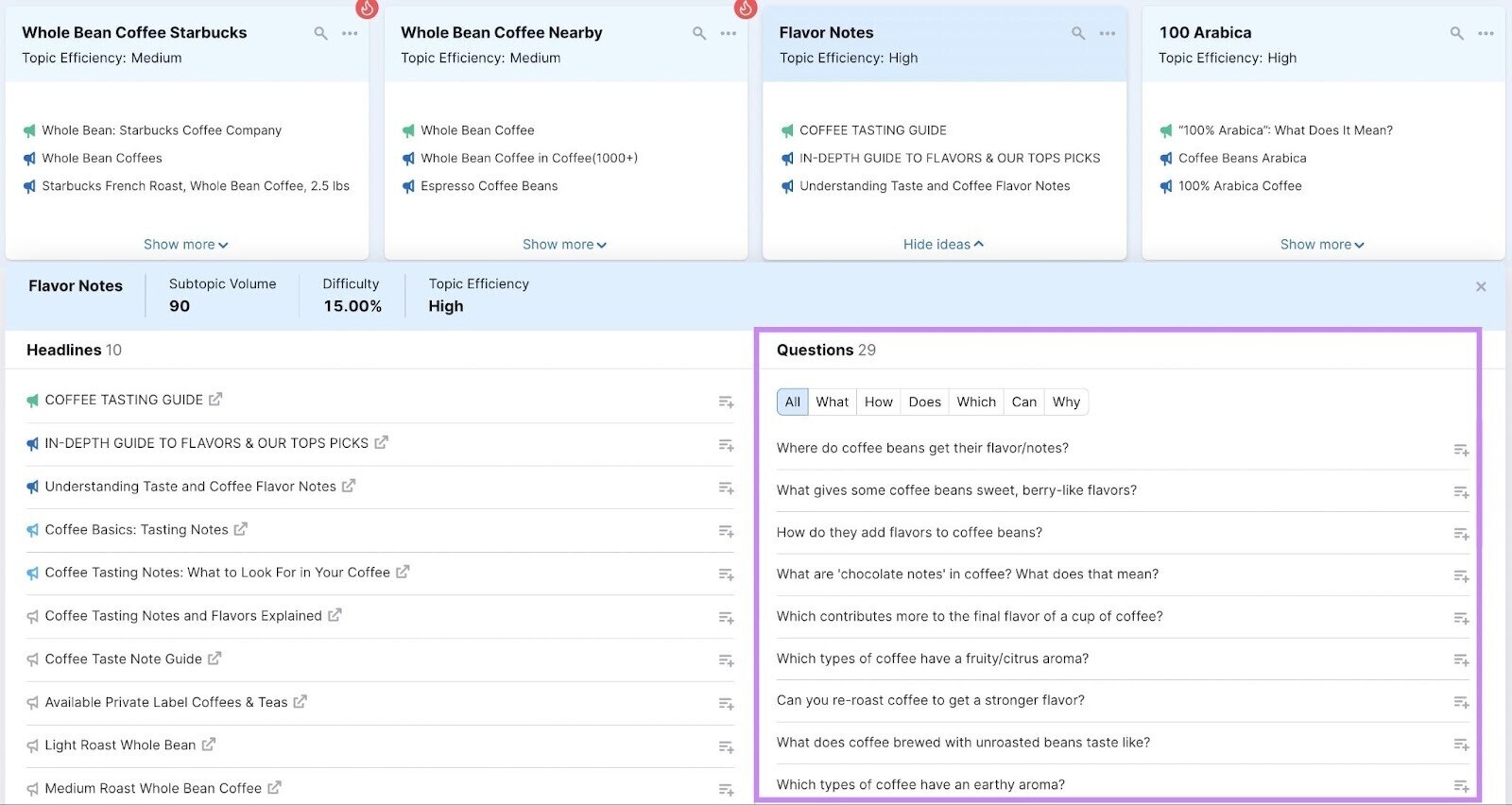
To save the questions you want to provide answers for on your site, add them to your favorites list. Then refer back to this list when building your content strategy. Your customer support team will thank you.
9. Enhances Customer Experiences
Offer educational information or actionable tips, often around specific products, to improve customer experiences.
These enhanced experiences can lead to:
- Positive reviews
- Word-of-mouth recommendations
- Repeat purchases
You may be able to charge more, too. An Emplifi study found that 65% of the U.S. shoppers it questioned would pay at least 5% more for a product if they’re confident they’ll receive an outstanding experience.
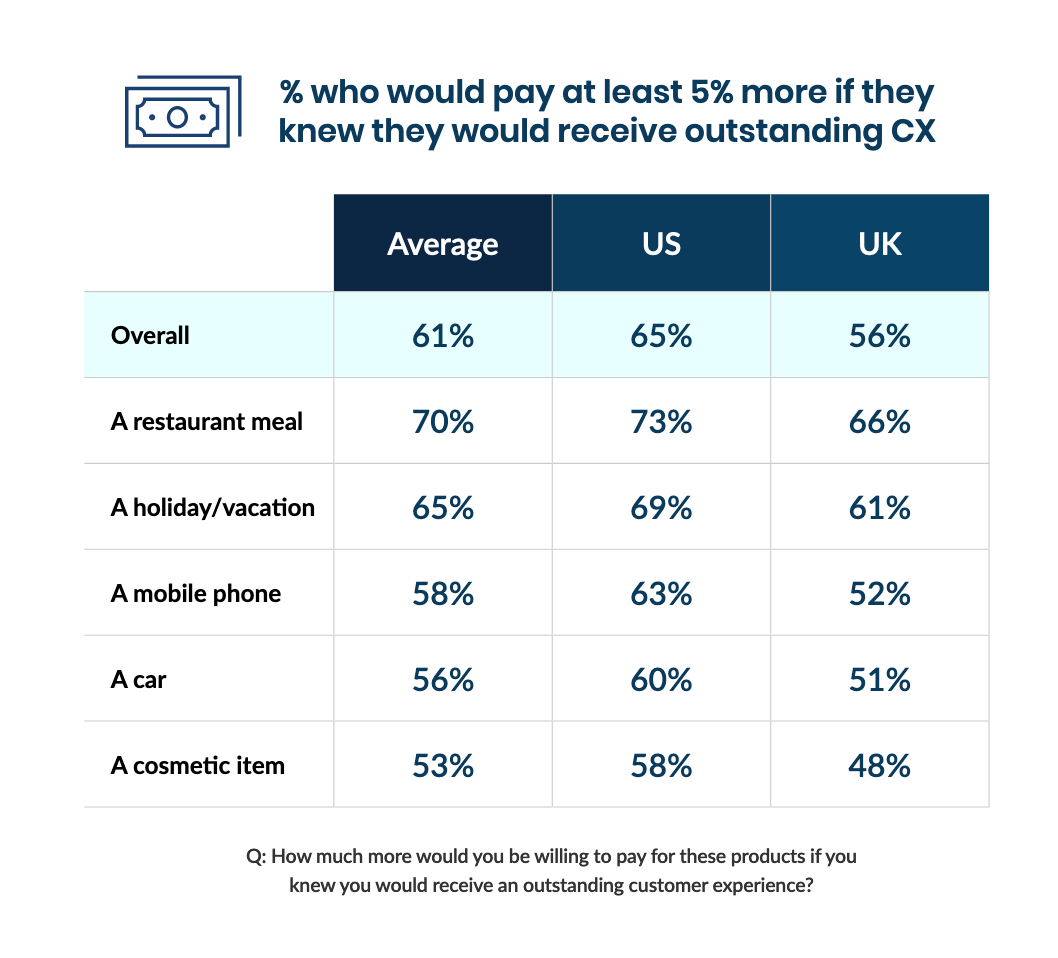
Think of content as an extension of your product.
For example, we know that helping Semrush users maximize their use of our products will make them happier. So, we create content like this:

In it, we offer simple, actionable advice to help anyone carry out effective keyword research. The piece talks generally about keyword research tools, but also includes steps on how to do it using screenshots.
The moral is this: Content marketing is as much about helping people enjoy your products as it is about getting them to convert. The more useful you are, the more loyalty you’ll build.
10. Streamlines the Sales Process
Marketing content helps sales teams to convert leads faster.
Case studies are particularly helpful. They allow salespeople to provide real-world examples of their products in action, without needing to tell the story ad-lib or involve previous customers.
Take this Sandler case study. A Sandler salesperson speaking with a lead in the engineering sector could use it to make their product—sales training courses—more relatable.
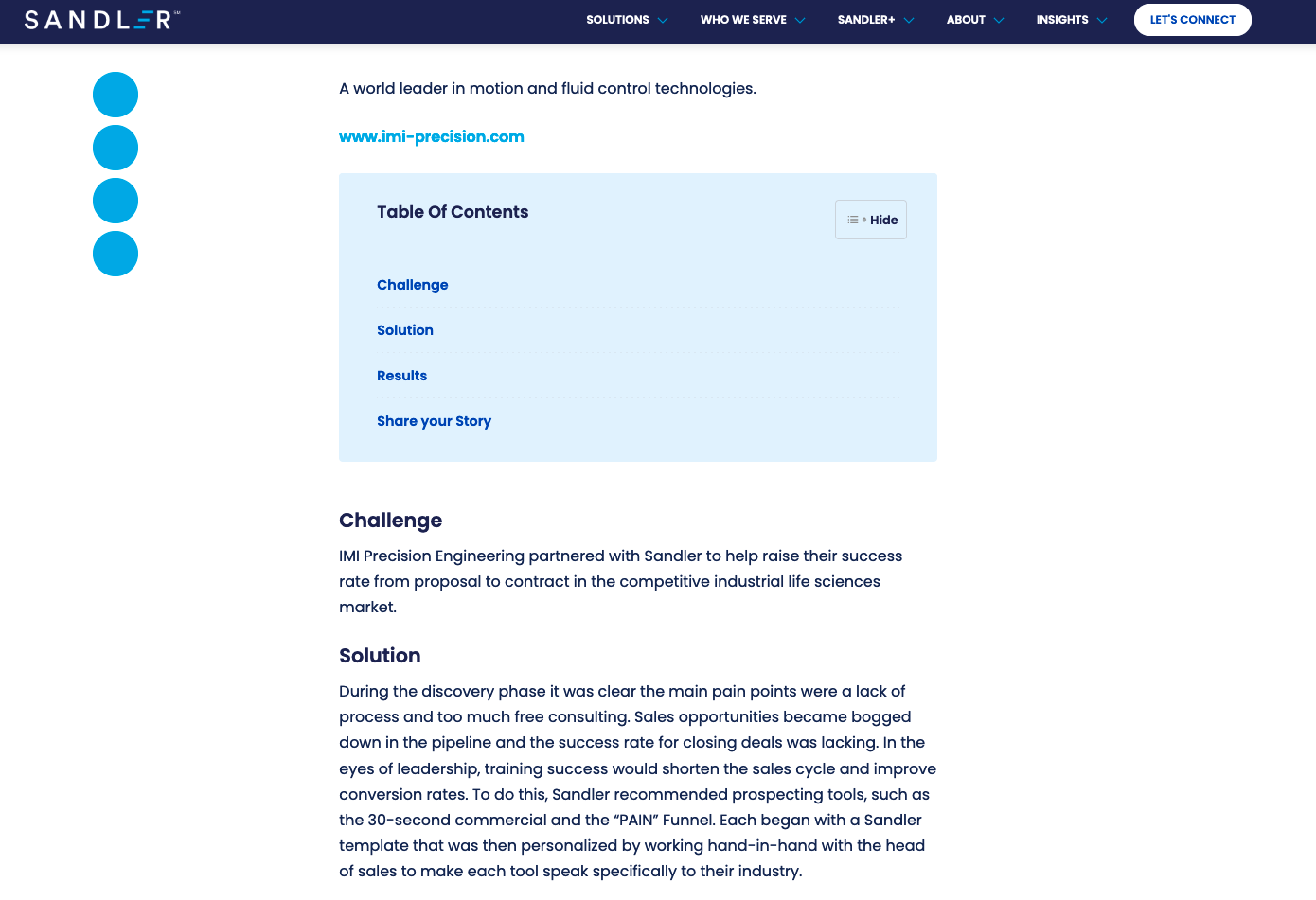
With all its key information, that piece of content is in a link and ready to use at a second’s notice.
Recorded demonstrations are valuable, too. While all sales reps should know their products well, a refined, easily shareable, and polished explainer video can help them engage busy leads.
Case studies, demo videos, and blog posts can’t replace sales enablement content (content designed specifically for use by sales teams) completely. But salespeople can certainly use it to move leads through the sales funnel more efficiently.
How to Start Reaping the Benefits of Content Marketing
The many long-term benefits of content marketing make it worth your time, effort, and investment. Get it right and you’ll grow, engage, and retain your audience, selling more products along the way.
There’s no one-size-fits-all content creation strategy, as every business and audience is unique, but it’s easy to get started.
Check out our Ultimate Guide to Content Marketing Strategy for more information. And, when you’re ready, learn How to Use Semrush for Content Marketing.

